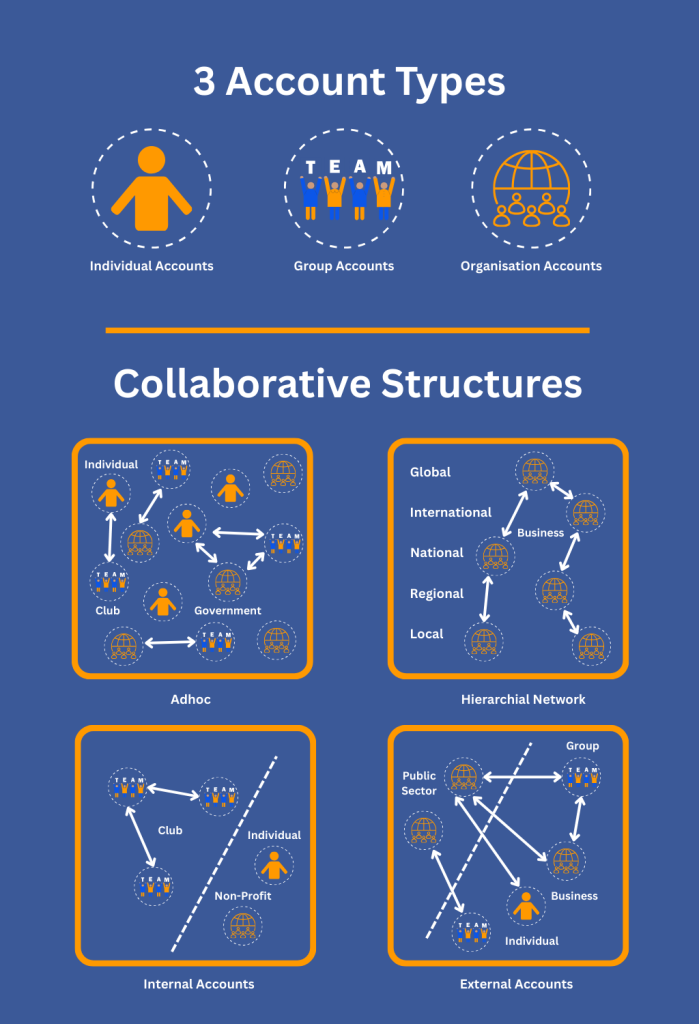Start Your Trial
Everything starts when you as an individual signs up for a free 14 day trial. During or after the trial, you choose to upgrade, or downgrade your individual account. You can also set up new multi-seat accounts and formations for your group or organisation. Separate emails and credentials needed. More information on starting right can be found here.
Account Types
Members complete their profiles and select one of the following Account types from the
Trial accounts allow the Member to use the account without restriction, after which they either upgrade to a forever free account with 1 seat or a subscription account with any of the following seat numbet configurations 1, 3, 5, 10, 15, or 20 seats. This allows multiple people to act under the same formation.

Broader Formations
- Start with the entity.
Every person, group, business, or organisation creates its own account first. This anchors value at the source – where ambitions, skills, and activities originate. - Form groups.
Entities can then come together into groups – e.g., a local networking chapter, a project team, or a coalition. Groups are built by connecting existing accounts, not replacing them. - Scale with master formations.
Groups and entities can be linked into larger “master groups” – such as regional or national networks, federations, or alliances – allowing ambitions to be progressed at multiple levels simultaneously. - Multi-entity organisations.
Large organisations can manage multiple accounts (e.g., by country, function, or purpose) and then link them into a single overarching formation for coordination.
Why This Matters
This bottom-up design means:
One Process for All Formations
No matter what type of formation you choose, everyone follows the same operational pathway:
This consistency ensures that whether you’re one person, a local group, or a global organisation, you’re always working within the same simple, scalable system.
👉 Formations give you the flexibility to start where you are, grow naturally, and collaborate at any level – while the 7-Step Process ensures every ambition has a clear path to delivery.
Click next to see this process unfold.
